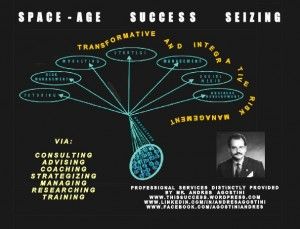TO BETTER UNDERSTAND THE POINT BY TONY BUZAN AND THE AUTHOR OF THE WHITE SWAN (ANDRES AGOSTINI), LET US CREATE A DIALOGUE SIMULACRUM BY BART SIMPSON AND HOMER SIMPSON.
TO BETTER UNDERSTAND THE POINT BY BUZAN AND THE AUTHOR, LET US CREATE A DIALOGUE SIMULACRUM BY BART SIMPSON AND HOMER SIMPSON.
Bart: Dad, why do you say that knowledge is a soup?
Homer: Son, because since time immemorial and before the advent of the Industrial Revolution, every type of knowledge was somewhat related to the other type. Tony does some nice chatting about it.
Bart: Dad, what is the Industrial Revolution? But in the process, don’t dictate me an academic lecture and scholarship, please!
Homer: Son, the Industrial Revolution is Day #1 when humans decided to throw in the towel and to make inanimate apparatus to rule the entire human race, thus ruling out hominids.
Bart: Is that Day #1 for Home Personal Computers making?
Homer: For PC making and the ensuing bots!
Bart: What do you mean by bots?
Homer: Those anthropomorphic and non-anthropomorphic apparatus that stem from Swiss-clockwork manufacturing and some other naughty gadgets by Leo.
Bart: What do you mean by naughty gadgets by Leonardo? Is that the same Leo of the Priory of Sion?
Homer: Yes. Leo’s automaton one, that, I guess, some architect or technologist have resembled and proved utility in that and so the tic-tact-toe thing went into inexhaustible infinity until its own destruction by tear and wear.
Bart: And what is the problem with building a tic-tact-toe thing, rumbling around?
Homer: My son, you are so naive. There is no problem with the tic-tact-toe thing rumbling around. The problem is that Siren Servers are planning to bestow such rumbling-around tic-tact-toe things with beyond-human-thinking capabilities. In the process, some rara avis and pigeons might become endangered species.
Bart: Dad, you must be jockeying! Are you, Dad, suggesting that real-world and present-day humans are entertaining the idea of enabling the worst nightmares predicted by Luddites and Proto-Luddites?
Homer: Well, Bart, the problem with you is that you haven’t read the Singularity is Near. There is no problem because in that book it is cherished that by a bird’s and a bee’s type of transubstantiation thing humans and apparatus will become one single entity. And thus mortality will become an unfashionable thing of the past.
Bart: Dad, but some spooky reasons beyond my understanding Jaron says, like Gerald Celente, that we need to become Siren-Servers advert and be careful that home PCs don’t stand-up and start flying and self-replicating and giving birth to upgraded tic-tac-toe devices.
Homer: Jaron, who?
Bart: That is, Jaron Lanier. He dearly harbors the serious notion of the Siren Servers (ISBN: 978–1451654974).
Homer: Bart, I don’t know that gentleman? What is that silly subtle point you are trying to make with me? To the point, please!
Bart: The problem is that Jaron argues that the man with the outlandish public laughter, a bit out of public proportion and without grace and appalling gusto, is set out, through his Siren Servers’ web-based store, to use rumbling-around tic-tact-toe and beyond-human-thinking capabilities things to do acrobatic-midair hovering, superseding watermelon-sized hovercrafts.
Homer: Son, if that is so anguishly true, I must declare you a shrewd, mordant brainchild. Why Caustic Monsieur Highest-Volume Laughter (ASIN: B007GPYLH0) would want those insane entities to do midair hovering?
Bart: Daddy, so that he can get his non-clouded-based products and cash-capturing to arrive on the customer’s hands, delivering quamtumly-encrypted materials, without the snailed-paced best offices of and by FEDEX or UPS.
Homer: But Bart, when the gentleman in question met with Charlie, did he hint something about you in-point stuff?
Bart: Charlie, Charlie who?
Homer: Charlie Rose, the Bloomberg TV’s journalist and nighttime interviewer, remember?
Bart: Yes, I do. But the Lanier guy says that the tic-tact-toe thing, beyond being smarter than a human device and hovering in the midair spatial plane, it is also going to be wirelessly connected in the temporal locus with the World-Wide Web and it is also going to be able to sequester wireless electricity, too.
Homer: Oh my God, son! Are you sure that you are NOT into the Scottish Rite?
Bart: Are you hinting me to be associated with the foundational architects of Washington D.C.?
Homer: Bart, are you suggesting that Mr. Laughter might as well be using Recondite and Hermetic Knowledge to make the tic-tac-toe a superrich-fortune-generating after-tax wealth, to out-compete Gates III and Buffett I?
Bart: You are close, Dad, but not close enough! Sure thing, Mr. Laughter will secure Recondite and Hermetic Knowledge. But in order to be even more technical and prepared, he is additionally going to use Andy’s practical idea on non-theological applied omniscience. Got it? He will, then, get his White Swan as his Swiss and Jersey Bankers will confirm his in-pocketed CASH. Thence, he will rule many Siren Servers!
Homer: What is the White Swan’s non-theological applied omniscience?
Bart: An invention by DARPA and NASA, greatly propelled by Dr. Robert Hutchings Goddard and Dr. Wernher von Braun. And before you ask, NASA is a spinoff by DARPA and DoD. And DARPA is where America’s most sophisticated ground-breaking hotbed-ed scientists reside, research and provide.
Homer: What is a White Swan?
Bart: The beforehand destruction of corporation’s MOST exponential risks and downside futures, transformed into insane richness and gold.
Homer: Do you think that these watermelon-sized wireless ubiquitous hovercrafts (quadracopters) will get into reproducing their non-biological specie?
Bart: Well, Joel and Orson argue that they will make self-replicating and self-upgrading watermelon-sized wireless hovercrafts. They say that the air traffic will be so jammed by the un-biological thinking and mating (reproducing) creatures that jet number 1 won’t be able to take off.
Homer: What Joel and Orson are those?
Bart: The one of the Radical Evolution (ISBN: 978–0767915038). Dad, where do you think these trends will take us to? Orson is a hell-of-American intellectual and movie director and maker that shocked TV viewers with the invasion of and by alien intelligences from the Omniverse’s Recondite and Hermetic: Dark Energy and Dark Matter. To this end, Olson explains his case below.
Homer: I first must correct you. I agree with Andy. He does not like the oversimplified “trend” and “countertrend” words. He says that trend is like a head-shot of a frozen dynamic projected trajectory, only bestowed by the Dynamic Driving Forces. If the Disruptional Singularity warrants it only, the Dynamic Driving Forces will, then, take us into Ray’s Technological Singularity.
Bart: I am confused! What are those singularities about?
Homer: The techie one is about birthing non-biological and transbiological humans that supersede the computational reckoning by today’s human brain. And making natural death an outright thing of the past. The Disruptional one is about human error, terror and flawness making waves in civilian and military spheres, including the imposition of the Cold War II by the express impious deeds of the Euro-Asian superpower as per the invite, not of the U.S., of the naive E.U. so-called “leaders.”
Bart: Can the self-replicating and self-upgrading watermelon-sized wireless hovercrafts carry improvised “x” devices?
Homer: I doubt it, Mr. Laughter has every White Swan calculated in detail. And White Swans hates every form of disruptions and are rara avis that destroy threats and risks.
Bart: What can a White Swan do for the most prominent Seattle inhabitant?
Homer: Make his core-business EVEN infinitely richer while securing a better laughter outpouring to the East Coast of the Atlantic.
Bart: Dad, how can we get on the boat on making wealth like him?
Homer: Through two quick ways. First, by doing smart entrepreneuring. Second, by doing the “…First…” through the White Swan.
Bart: Why is it necessary the White Swan?
Homer: First, in order not to get silly black swans. Second, in order to make your coped-with black swans into beautiful and lucrative White Swans through Transformative and Integrative Risk Management interdisciplinary problem-solving methodology. (That is: Feet-on-the-ground problem solving).
Bart: And What is Transformative and Integrative Risk Management interdisciplinary problem-solving methodology?
Homer: Andy’s interdisciplinary approach to Seize Success, Preclude the Disruptional Singularity and enable Ray’s Technological Singularity.
Bart: How do you define success?
Homer: To this end, Andy says that Success is achieved in two simultaneous ways. FIRST, By securing all of your designated objectives and goals, despite competitors and governments. SECOND, By securing that, as you over-accomplish your designated objectives and goals, you give your competitors tons of Sputnik Moments.
Bart: Oh, I see. Buy what is that Rusky notion that I don’t get?
Homer: Sputnik moments are when you are superseded by your competitors as they throw at you manipulated strategies and technological innovations to disrupt your business from competing. And if you are getting Sputnik moments is because you are doing, without consciousness, black swans only and are not responsive to the White Swan idea.
Bart: Dad, that sounds a bit complicated.
Homer: Bart, for some things you are smart. And for others you are a fool. Competition between business enterprises are harsh actions by Frederick The Great and Emperor Napoleon I.
Bart: Dad, why are you teaching me history? I hate that knowledge field.
Homer: Bart, if you don’t learn history, you are set out to fail at entrepreneuring! You can have all the high tech you want but if you don’t know how to do your strategy right and do right with your risks and futures, you are destined to be bankrupted.
Bart: Dad, Are all entrepreneurs and corporation CEOs and chairpersons so anti-shrewd?
Homer: 97% of them are! Those guys and gals think that by having tons of servers and web-based mobile applications they will outsmart the competition and governments. Hence, they are immeasurably wrong!
Bart: Dad, so one needs to go further than having laptops, servers, kindles, e-readers, i-pads, i-phones and so forth? Are those the employment of what Andy and other call tangibles.
Homer: Yes, son. You gotta do your intangibles. Even tangibles are made up of intangibles. The world is ruled by intangibles. Stated simply, intangibles are Intellectual Capital. You see, not only corporations have Intellectual Capital but also sole proprietors as Andy and Ray. White Swan and Transformative and Integrative Risk Management are Intellectual Capitals, solely owned by Andy.
Bart: Is software contemplated within your Intellectual Capital definition?
Homer: Yes, software is an intangible and an Intellectual Capital. And, for the sake of clarity, you can even have a systematized interdisciplinary methodology in place that does not need computerization or web-basing. You see, Bart, everything under Computronium’s Sun (its own Star) is always, whether we know it or not, reckoning zillion calculations.
Bart: Is the biological mind a good example of a systematized hardware whose locus does not belong to W3?
Homer: Yes, it is. And you can also add that the bio-PC is systematic and yet, in many cases, not systemic.
Bart: And beyond patents and other copyrighted materials, What else is Intellectual Capital?
Homer: Two-fold question. FIRST, there is the knowledge base of the Corporation. SECOND, there is the knowledge base of each Corporation’s employee beyond any property and/or effort by said Corporation.
Bart: Who owns Tony Buzan’s Broth and Soup?
Homer: Well, Tony’s soup has a primordial genesis in people and civilizations from: Classic Ancient Greeks, Classic Ancient Romans and Latins, Classic Ancient Aryans and Germanics, Classic Ancient Scandinavians and, for instance, Classic Ancient Egyptians and Classic Ancient Phoenicians. And the idea by all of them is that the totality of knowledge does not have clearly-human-made knowledge (system) demarcations (boundaries). And superspecialization and overspecialization are NEVER recommended by these Classic Ancient civilizations.
Bart: And because of that by you is that Andy suggests to swiftly and thoroughly embrace the non-theological omniscience notion, just as DARPA, NASA and Shell do since the early 1950s.
Homer: Bart, you are becoming most mordant and probably into the Illuminatis? Are you?
END OF THE EXCHANGE SIMULACRUM.
You are welcome to read the White Swan here.
The White Swan’s Beyond Eureka and Sputnik Moments: How To Fundamentally Cope With Corporate Litmus Tests and With The Impact of the Dramatic Highly Improbable And Succeed Through Transformative and Integrative Risk Management! [TREATISE EXCERPT]. By © Copyright 2014 Mr. Andres Agostini — All Rights Reserved Worldwide — « https://lifeboat.com/blog/2014/04/white-swan »





 Please don’t make me translate your Indian Standard Time. I will get it wrong. I always do.
Please don’t make me translate your Indian Standard Time. I will get it wrong. I always do.



